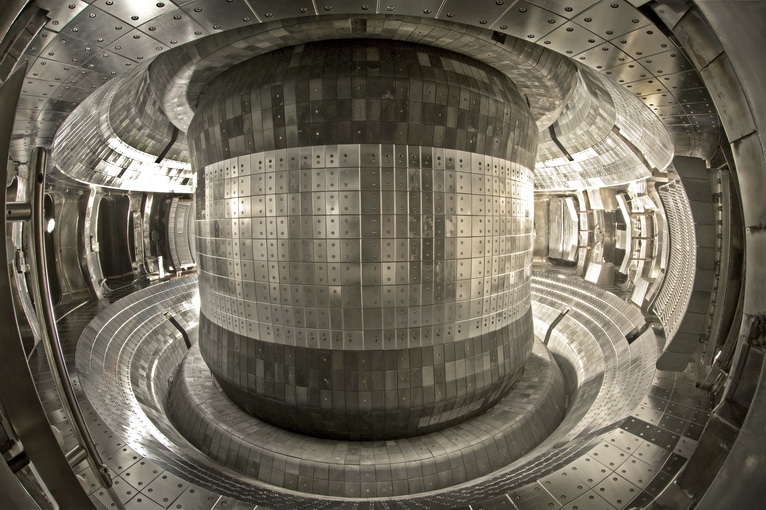Progress continues in the attempt to master nuclear fusion—the phenomenon that powers the stars, including our Sun—for energy production here on Earth. Recent research has identified a previously unknown kind of heat burst that causes reaction-killing instabilities inside experimental fusion machines, called tokamaks. These doughnut-shaped vessels contain and sustain the controlled fusion reaction, using magnetic fields to trap and guide superheated hydrogen. On Earth, nuclear fusion requires heating hydrogen up to approximately 100 million Kelvin (100 million degrees Celsius or 180 million degrees Fahrenheit), thus converting it into a state of matter called plasma. Within this superheated plasma, atoms can start to fuse together into heavier atoms, releasing energy in the process. See also: Atom; Atomic nucleus; Atomic physics; Earth; Electricity; Energy; Energy sources; Gas; Hydrogen; Magnetic confinement fusion; Matter (physics); Nuclear fusion; Nuclear physics; Nuclear reaction; Plasma (physics); Star; Sun; Temperature; Thermonuclear reaction

The heat burst events that can short-circuit these nuclear fusion reactions, even causing damage to a tokamak's inside walls, are known as edge localized modes, or ELMs. Engineers and physicists have come up with numerous ELM-suppression techniques as they have continued to develop tokamak reactors since the 1950s. Notable current projects include the DIII-D National Fusion Facility in San Diego, California; the International Tokamak Experimental Reactor (ITER) in France; and the Experimental Advanced Superconducting Tokamak (EAST) in China. See also: ITER (International Tokamak Experimental Reactor)
Researchers from the United States Department of Energy’s Princeton Plasma Physics Laboratory discovered the new kind of ELM while reviewing data from the DIII-D project. The scientists demonstrated that anomalous fluctuations in the machine's performance in fact had correlations with the formation of certain waves in the plasma. When at the edge of the circulating plasma torus, the waves combined to generate a third kind of wave that went on to produce destabilizing heat bursts. Buttressing the results, this ELM formation also turned up in data recorded at tokamaks in the United Kingdom and Germany. See also: Heat; Torus; Wave (physics); Wave mechanics; Wave motion
The exact mechanism behind the new kind of ELM remains poorly understood. For example, the puzzling ELMs arose after unusual periods of plasma stability, rather than turbulence, as one might expect. By studying the phenomenon further, it should be possible to craft mitigation or suppression techniques, advancing the state of the art in artificial nuclear fusion and bringing it closer to reality. To date, harnessing this energy-generation method that is ubiquitous in the universe has proven beyond science's grasp; an old joke amongst physicists is that nuclear fusion is always some decades away. The ITER project, the largest collaboration, intends to begin experiments in the mid-2020s. With more progress on diagnosing unappreciated problems experienced by tokamaks, the future that is fusion could finally become the present. See also: Turbulent flow





